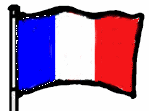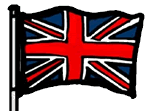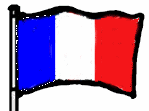www.NATURESCENE.net
 DICTIONNAIRE BOTANIQUE/BOTANICAL DICTIONARY
DICTIONNAIRE BOTANIQUE/BOTANICAL DICTIONARY 
A - B - C - D - E - F - G - H - I - J - K - L - M - N - O - P - Q - R - S - T - U - V - W X - Y - Z
 I - J - K
I - J - K 
Id... Im... In...Inn... Ir... Is... Jo... Ju... Ke... Ki...
Imbriqué Imparfaite Imparipennée Incisée Incomplète Indéfinie Indéhiscent Indéterminée Indigène Induré Indusie Indusium Induvie Inflorescence Infrutescence Infundibuliforme Introduit Involucelle Involucre Involutée Irrégulière
idioblast a cell, especially of a leaf, differing markedly from surrounding cells. They often synthesise specialised products such as crystals.
illégitime se dit dun nom validement publié mais contraire à ou plusieurs articles du de Nomenclature botanique. Un tel nom ne peut être utilisé comme nom en usage.
imbricate overlapping each other of perianth parts, edges overlapping in the bud (the convoluted arrangement is a special form of imbrication).
imbriqué (adj.)
1. se dit d'organes (feuilles, écailles) se chevauchant partiellement, verticalement ou latéralement. Ex : Feuilles du Cyprès, du Thuya...
2. qualifie une préfloraison au niveau de laquelle, dans un même verticille, une seule pièce est recouvrante, les autres étant emboîtées les unes dans les autres. Ex : Corolle des Caryophyllacées.
imparfaite (adj.) désigne une fleur dépourvue d'étamines ou de pistil.
Syn Unisexuée.
Ant Parfaite, bisexuée.
imparipennée (adj.) qualifie une feuille composée, pennée, terminée par une foliole unique. Ex : Feuille de Robinier faux-acacia, de Noyer, de Frêne.
Feuille imparipennée
imparipinnate a pinnate leaf with an odd number of pinnae (terminated by a single leaflet) compare paripinnate.
in in nomenclature, where the preceding author published the name in an article or book, authored or edited by the succeeding author.
in- préfixe privatif qui marque labsence ou la négation un arbre inerme est sans épines une capsule indéhiscente ne souvre pas naturellement à maturité.
inbreeding the production of offspring between closely related parents leading to a high degree of similarity self-fertilization is the most intense form of inbreeding.
incertae sedis of unknown taxonomic affinity, relationships obscure.
incised cut deeply and (usually) unevenly (a condition intermediate between toothed and lobed).
incisée (adj.) caractérise une feuille découpée finement et irrégulièrement (incisions plus profondes que les dents mais n'atteignant pas la nervure principale).
included enclosed, not protruding for example stamens within the corolla.
inclus qualifie des organes restant à lintérieur de leurs enveloppes et nen émergeant pas étamines incluses dans la corolle.
incombant se dit des cotylédons dun embryon courbe lorsque laxe radicule-hypocotyle vient sappliquer sur le dos de lun deux.
incurved bent or curved inwards of leaf margins, when curved towards the adaxial side.
incomplète (adj.) se dit d'une fleur démunie d'une ou de plusieurs parties florales : sépales, pétales, étamines, ou pistil.
Ant Complète.
indéfini désigne un axe dont la croissance est théoriquement illimitée et qui nest pas dominé normalement par ses rameaux latéraux.
indéfinie (adj.) se dit d'une inflorescence dont le méristème apical, qui termine l'axe principal et permet sa croissance, ne se transforme pas en fleur. Il est donc théoriquement possible pour une telle inflorescence de développer de nouvelles fleurs au sommet pour une période indéterminée. C'est le cas de nombreuses inflorescences de type racémeux. Ex : Épi, Grappe.
Syn indéterminée.
indefinite variable in number numerous e.g. more than twice as many stamens as petals or sepals, or when an inflorescence is not terminated by a flower (and continues growing) cf. definite.
indehiscent not opening in any definite manner at maturity usually referring to fruit. Contrast with dehiscent.
indéhiscent (adj.) se dit d'un fruit qui ne s'ouvre pas pour libérer ses graines lorsqu'il est mûr. Les graines sont donc libérées par destruction de la paroi. Les fruit charnus (baies, drupes) sont quasiment toujours indéhiscents de même que les fruits secs à une graine (akène, caryopse, gland...)
Ant Déhiscent.
indeterminate unlimited, usually in growth.
indéterminée (adj.) voir indéfinie.
indigène (adj.) qualifie une plante originaire du lieu où elle vit.
Syn autochtone, natif.
Ant exotique, introduit.
indigenous native to the area, not introduced, and not necessarily confined to the region discussed or present throughout it (hardly distinct from native but usually applied to a smaller area). For example, the Cootamundra Wattle is native to Australia but indigenous to the Cootamundra region of southern New South Wales cf. endemic.
indumentum a collective term for a surface covering of any kind of trichomes, e.g. hairs, scales. .
induplicate folded upwards, or folded with the two adaxial surfaces together.
induré (adj.) se dit d'un organe devenu ligneux et dur.
indument (n.m.) poils qui entourne un végétal
indusie membrane qui recouvre un sore.
indusium 1. a membrane covering the sporangia of some ferns. 2. a cup enclosing the stigma in Goodeniaceae.
induvie (n.f.) organe extérieur aux pièces femelles de la fleur mais qui continue sa croissance après la fécondation. Ex Réceptacle floral du Fraisier donnant naissance au faux-fruit.
Fruit constitué du réceptacle devenu charnu (a) du Fraisier, où il est parsemé en surface de petits akènes, et (b) du Rosier où il renferme des nucules
indupliqué-valvaire qualifie une préfloraison valvaire, à bords des segments du périanthe enroulés vers lintérieur.
ined. abbreviation of Latin inedita, an unpublished work. Used to indicate that a botanical name appeared only in a manuscript that was not published, so the name is invalid.
inerme sans aiguillon, ni épine.
infère se dit dun ovaire inclus dans le réceptacle ou inclus dans lhypanthe et soudé à sa paroi.
inferior of an ovary, at least partly below the level of attachment of other floral parts compare superior.
inflated swollen, like a bladder.
infléchi courbé vers lintérieur.
inflexed sharply upwards or forwards compare deflexed.
inflorescence several flowers closely grouped together to form an efficient structured unit the grouping or arrangement of flowers on a plant.
inflorescence (n.f.)
1. regroupement de fleurs en un ensemble physionomiquement bien individualisé, sur un même axe.
2. type de disposition des fleurs chez les différentes espèces.
On distingue
" inflorescences monopodiales où les premières fleurs à s'épanouir sont celles situées à la base de l'axe (ou à la périphérie de l'inflorescence si celle-ci est contractée).
Ce type est représenté par la grappe et les formes qui en dérivent épi, corymbe, ombelle, spadice, capitule.
" inflorescences sympodiales (ordre d'épanouissement inverse), caractérisée par la cyme.
" inflorescences simples, composées ou composites (c'est à dire composées non homogènes ou composées mixtes : corymbes de capitules par exemple).
infra- préfixe signifiant inférieur ou situé en dessous, inflorescence infrafoliaire, située sous la zone dinsertion des feuilles taxon infraspécifique, de rang inférieur à lespèce : sous-espèce, variété ou forme.
infraspecific denotes taxonomic ranks below species level, for example subspecies.
infrageneric denoting taxonomic ranks below the genus level, for example, subgenera, sections, and series.
infructescence the grouping or arrangement of fruits on a plant.
infundibular (infundibuliform) funnel-shaped, for example in the corolla of a flower.
infundibuliforme (adj.) se dit d'une corolle gamopétale en forme d'entonnoir.
Corolle infundibuliforme
infundibuliforme en forme dentonnoir.
infrutescence (n.f.)
1. type de disposition des fruits et de ses annexes (pédoncule, pédicelle et bractées) d'une plante.
2. ensemble des fruits d'une plante.
3. fruit issue d'une inflorescence.
innovation (n.f.) désigne chez les Poaceae, des bourgeons développés en rameaux courts a la base des chaumes et névoluant que lannée suivante. Une innovation est intravaginale lorsquelle se développe à lintérieur de la gaine foliaire ou extravaginale si elle la perce et se développe à lextérieur.
inrolled rolled inwards.
insectivorous catching, and drawing nutriment from, insects.
insertion, point of the point at which one organ or structure (such as a leaf) is joined to the structure which bears it (such as a stem).
integument in general, any covering, but especially the covering of an ovule.
inter- préfixe qui marque lintervalle, lespace compris, la partie située entre deux éléments : stipules interpétioliaires situées entre les pétioles de feuilles opposées interstaminal : qui est placé entre deux étamines.
intercalary (of growth) occurring between the apex and the base of an organ
intercalary meristem a meristem located between the apex and the base of an organ
interjugary glands in pinnate leaves, glands occurring along the leaf rachis between the pinnae (occurring below the single, and often slightly larger, gland at or just below the insertion of the pinnae) cf. jugary.
internode the portion of a stem between two nodes.
interpetiolar of stipules, between the petioles of opposite leaves, e.g in Rubiaceae.
intra- préfixe qui marque la position intérieure : une nervure intramarginale, située à lintérieur et à une courte distance de la marge de la feuille (ou dun autre organe) et la longeant stipules intrapétiolaires situées dans laisselle des pétioles intrastaminal, situé à lintérieur du cycle détamines par exemple, le disque des Anacardiaceae.
intramarginal inside but close to the margin, for example a vein in a leaf.
intrastaminal inside the stamens or androecium, usually referring to the location of a nectary disk.
intriqué à rameaux nombreux, serrés, sans ordre.
introduit (adj.) se dit d'un Végétal étranger à la flore d'une région donnée et qui y a été amené intentionnellement ou accidentellement à partir d'un autre territoire.
introrse of anther locules, with opening towards the centre of flower (at least in bud) cf. extrorse, latrorse.
introrse se dit dune anthère à fentes de déhiscence tournées vers lintérieur de la fleur.
intrusif se dit du développement dun organe dans une position inhabituelle ex. : un placenta intrusif.
invalid use of names not validly published according to the Code i.e. they are not strictly 'names' in the sense of the international Code of Botanical Nomenclature.
involucelle (n.f.) petit involucre de bractéoles (petites bractées) situé à la base des rayons d'une ombellule, chez de nombreuses Apiacées.
Ombelle d'ombellules avec involucre de bractées et involucelles de bractéoles
involucre a structure surrounding or supporting, usually a head of flowers. In Asteraceae, it is the group of phyllaries (bracts) surrounding the inflorescence before opening, then supporting the cup-like receptacle on which the head of flowers sits. In Euphorbiaceae it is the cuplike structure that holds the nectar glands, nectar, and head of flowers, and sits above the bract-like cyathophyll structure. Involucres occur in Marchantiophyta, Cycads, fungi, and many other groups.
involucre (n.f) 1. l'ensemble de bractées florales insérées en verticille à la base d'un pédoncule floral ou des inflorescences (ombelles ou capitules), constituant ainsi une sorte de collerette.
Ombelle avec involucre de bractées
2 chez les Poaceae, désigne l'ensemble des soies entourant la base des épillets ou des groupes dépillets dans certains genres.
involute rolled inwards, for example when the margins of a leaf are rolled towards the adaxial (usually upper) surface compare revolute.
involutée (adj.) se dit d'une feuille dont les bords sont enroulés sur eux-mêmes vers la face supérieure, le long de la nervure médiane.
iridescent with a reflective coloured sheen produced by structural coloration, as in the speculum of the mirror orchid Ophrys speculum.
irregular cannot be divided into two equal halves through any vertical plane. See also asymmetrical, compare zygomorphic, actinomorphic, regular.
isidium A warty of club-like structure in some lichens that breaks off and forms new lichens without sexual reproduction. Isidia are dispersed by mechanical means, compared to soredia, which are dispersed by wind.
iso- préfixe signifiant égal, régulier : isomorphe, de forme semblable, sans variation isopolaire, se dit dun grain de pollen dont les faces proximale et distale se ressemblent isostémone, qualifie un androcée où les étamines alternent avec les pièces du verticille interne du périanthe et sont en même nombre que celles-ci isotype, double dun holotype ou dun lectotype.
isobifacial (of flat structures, especially leaves) with both surfaces similar, usually referring to cell types or to the number and distribution of stomata.
isomerous having an equal number of parts in the whorls.
isotomic having branches of equal diameter, compare to anisotomic.
irrégulière (adj.) voir zygomorphe.
joint a node or junction of two parts articulation.
jugary of glands, gland occurring on the rachis of a bipinnate leaf at the junction or attachment of pairs of pinnae or pinnules, as in some Acacia species cf. interjugary.
juvenile leaves formed on a young plant and different in form from the adult leaves.
-jugué suffixe désignant une feuille composée-pennée portant un certain nombre de paires de folioles ex. :trijugué, à 3 paires de folioles.
keel (adj. keeled), a prominent longitudinal ridge like the keel of a boat, e.g. the structure of the corolla formed by the fusion of the lower edge of the two abaxial anterior petals of a flower in the Fabaceae.
kernel see drupe.
key innovation a novel phenotypic trait that allows subsequent evolutionary radiation and success of a taxonomic group.
kingdom the highest generally employed category of the taxonomic hierarchy, above that of division (phylum). The Plant Kingdom includes vascular plants, bryophytes and green algae and is also known as the clade Viridiplantae.
Top of Page




